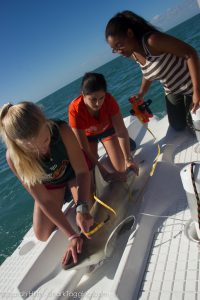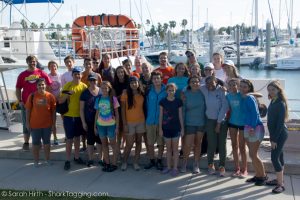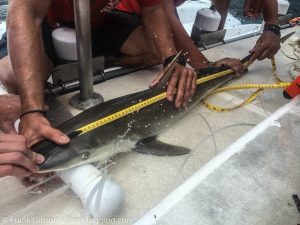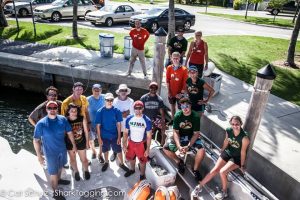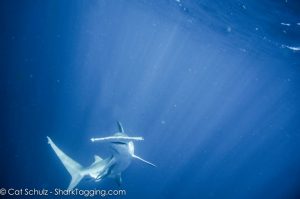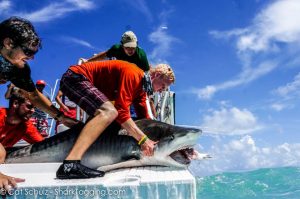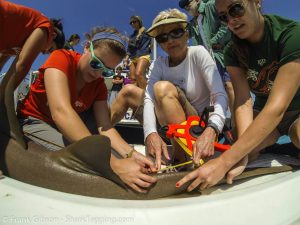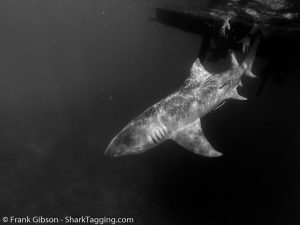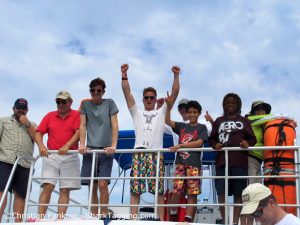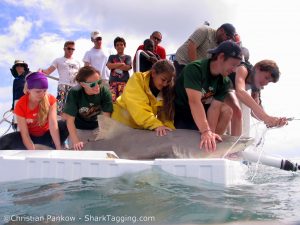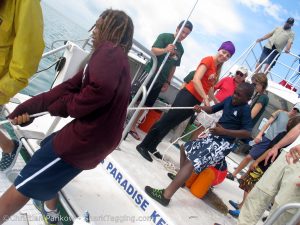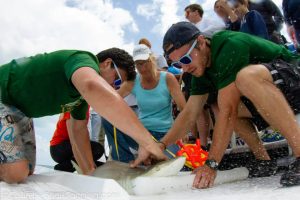Shark Tagging with MAST
By Daniela Ferraro, RJD Intern
On Saturday, December 6th, RJD embarked on a shark-tagging trip with a wonderful group of students from MAST Academy. Right before finals, this trip couldn’t have come any sooner. I woke up early to absolutely beautiful weather and knew the day was going to be a great one. I grabbed my gear and headed off on Dani’s taxi service, picking up several other interns on our way to Diver’s Paradise. We arrived around 8am and quickly went to work loading up all of our equipment and gear so we could get out on the water!
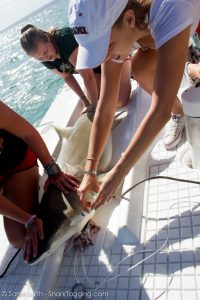
A participant conducts a reflex test of a shark’s nictitating membrane, or ‘eyelid,’ which is a measure of stress levels.
We headed out from Crandon Marina and headed towards Stiltsville Channel. With higher wind activity than normal, we decided not to add extensions onto our lines. After a safety talk with trip leader Austin and Captain Eric, we were on our way. As the rest of the interns got busy setting up our drumlines, Gabi and Beau gave a quick overview of all of the workup we give each shark: nictitating membrane test, measurement, fin clip, and tagging. With the help of the students from MAST, and our additional guests, we set out the first ten drumlines to soak for an hour.
Our day began with a bang and we pulled up a 158 cm female blacktip on our very first line! The group did a great job helping us take measurements and tissue samples and placing a tag in the shark’s dorsal fins for future identification. For some of the group, this was their first time seeing a shark and the RJD team was just as excited to share this with them. With spirits high, we had a lot of help pulling in the lines on our first set. Most of our bait came back with a few bites out of them, if they came back at all! In the middle of our second set of lines, we managed to pull in a beautiful male lemon shark, measuring in at a total of 224 cm. Towards the end of the day, our group kept up their enthusiasm and it paid off: on our second to last line, we pulled in another female blacktip! Hannah and I held down the shark while our team did a quick workup and she was released in excellent condition.
The group was essential in helping us do our work ups on the sharks, and each shark team was prepped and enthusiastically ready to go just in case we caught a shark. With the help of Beau and new intern Emma, we also managed to take morphology measurements on all three sharks. Gabi and Austin also got blood from both blacktips and the lemon shark. This data will be used in several projects going on in the lab. Overall, we had a fantastic day on the water and the RJD team looks forward to going shark tagging with MAST Academy again!

